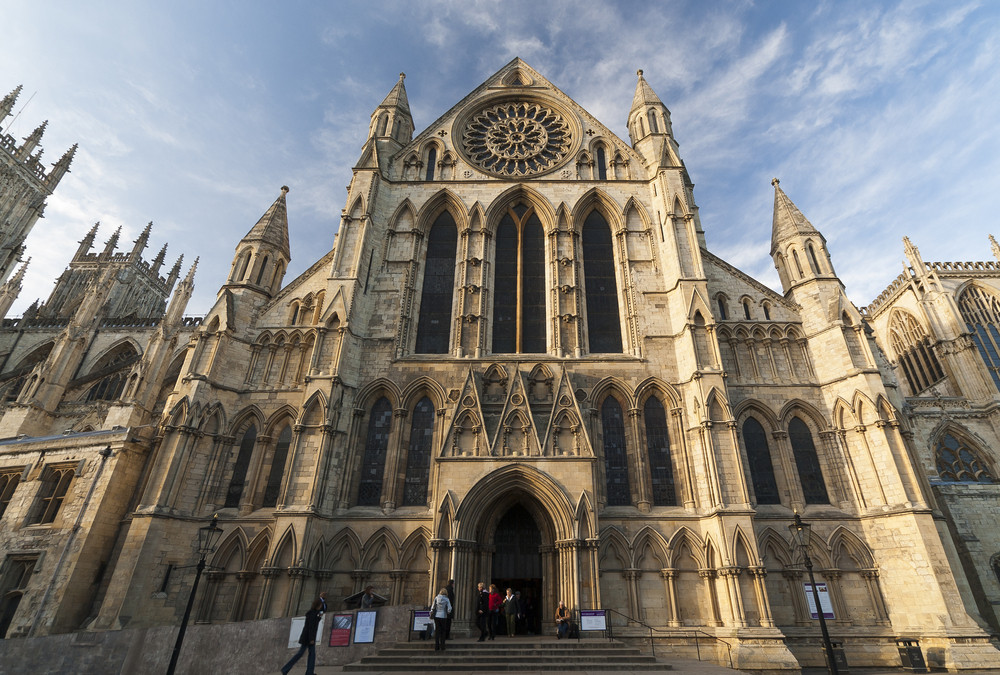Popular Reads
Top Results
Can't find what you're looking for?
View all search resultsPopular Reads
Top Results
Can't find what you're looking for?
View all search results10 landmark buildings that were destroyed, then rebuilt
From bombed cathedrals to historic opera houses that went up in flames, here are examples of landmark buildings that were destroyed and then rebuilt, as is planned for the Notre-Dame Cathedral.
Change text size
Gift Premium Articles
to Anyone
B
efore Notre-Dame Cathedral in Paris, engulfed in flames recently, several heritage sites around the world have been either completely or partially destroyed by fires.
From bombed cathedrals to historic opera houses that went up in flames, here are examples of landmark buildings that were destroyed and then rebuilt, as is planned for the Notre-Dame Cathedral.
York Minster
On July 9, 1984, a fire believed to have been triggered by a lightning strike caused severe damage to Britain’s imposing York Minster. The massive blaze destroyed the roof of the south transept of the Gothic cathedral, which was completed in the 15th century.
The intense heat cracked its magnificent 16th-century stained glass Rose Window into tens of thousands of pieces but it was able to be painstakingly repaired.
Restoration work on the minster was completed in 1988 at a cost of £2.25 million.
Brazil’s National Museum
On Sept 2, 2018, Brazil’s National Museum, located north of Rio de Janeiro, was ravaged by a massive fire.
Latin America’s largest natural history and anthropology museum held more than 20 million arteficts and 530,000 titles.
The museum was particularly reputed for the richness of its paleontology department with more than 26,000 fossils, including a dinosaur skeleton discovered in Brazil’s central Minas Gerais.
Some of the specimen of species that disappeared in the blaze included giant sloths and sabre-toothed tigers.
Venice opera house
In 1996, Venice’s celebrated opera house La Fenice was gutted by fire. With its near-perfect acoustics, La Fenice, opened in 1792, was one of the most beautiful opera houses in the world and one of the most famous in the history of opera.
Two electricians were sentenced between six and seven years in prison on negligence charges.
The opera house reopened in 2004.
Barcelona opera house
In 1994, the Gran Teatre del Liceu, the world-famous opera house in Barcelona, was destroyed by fire.
One of Spain’s cultural jewels, the 150-year-old theatre was gutted in a blaze in which only the foyer and the horseshoe arch over the auditorium were left standing. It reopened in 1999, its Italianate interior – with brilliant colours, sweeping balconies and gilded plaster-work – was recreated almost exactly to the original.
Windsor Castle
A major fire at Windsor Castle, west of London, on Nov 20, 1992, destroyed the north-eastern part of the royal site, the queen’s weekend residence.
Nine of the rooms were left unrecognizable by the fire, which started in the former Chapel Royal when a lighting projector too close to a curtain started the blaze during routine maintenance work.
It took 250 firefighters working 15 hours and pumping more than 6.5 million litres of water to bring the blaze under control.
Windsor Castle reopened to the public in 1997 after five years of restoration.
Bosnia’s National Library
Bosnia’s 19th century National Library was destroyed in the war-time siege of the city of Sarajevo, overnight on Aug 25 and 26, 1992.
It had housed some two million books, old scripts, photographs and transcripts before it was shelled by Serb forces who kept Sarajevo under a three-and-a-half-year-long siege.
Only some 10% of its resources were saved from the resulting fire.
Reconstruction works, part-financed by the European Union, began in 1996 and the new library was inaugurated in 2014.
Notre-Dame of Reims
In September 1914, the gothic cathedral in the French city Reims was struck by intense World War I German bombardment, sparking a massive blaze. With towers rising 81m high, the Notre-Dame (Our Lady) of Reims – where French kings were once crowned – had already been devastated by fire in 1481.
In 1919 the French state undertook reconstruction, supported by private patrons, notably the Rockefeller family.
It re-opened in 1938 with the previous oak framework replaced by a lighter, fire-proof frame and new stained glass windows designed by Marc Chagall and Imi Knoebel.
Read also: Notre-Dame, loved through the ages yet neglected: Historian
Dresden cathedral
In February 1945, the 18th-century Frauenkirche in the German city of Dresden collapsed under Allied bombing at the height of World War II.
For nearly a half-century the heap of ruins remained untouched. It was only in 1994 that a project began to rebuild Germany’s largest church.
The “Call from Dresden” launched in 1990 collected 180 million euros for the work, with the 600,000 donors ranging from individuals to German and foreign businesses.
The baroque masterpiece was reconstructed faithfully and included 8,400 stones from the original building. It re-opened in 2005.
Moscow’s Christ the Saviour
This cathedral in the heart of Moscow was built in 1839 as a monument to the victory of Russian forces over Napoleon.
Stalin had it dynamited in 1934 to make way for a Palace of the Soviets but the project was dropped and a giant open-air swimming pool built instead.
The Moscow Pool shut in 1993 and work began two years later on a replica of the original Russian Orthodox cathedral based on the original plans. The new Cathedral of Christ the Saviour opened in 2000.
Geneva’s Grand Theatre
In 1951, the Grand Theatre of Geneva in Switzerland, built in the 19th century, was devastated in a fire that began during the preparation for a performance of Richard Wagner’s The Valkyrie.
The theatre reopened in 1962.







